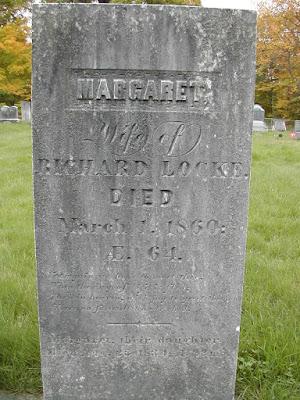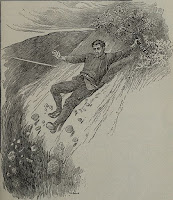Genealogy:
Below you can see the lineages of both Horace Holly Seaver and the genealogist Randy Seaver. It is also interesting to note that my 4th great grandfather, Romanus Emerson (1782 - 1852) had a daughter named Emily, who married Melzar Stetson, a 2nd cousin to Horace Seaver. I am also related to Horace Seaver through his grandmother, Mary May (b. 1657) who is related to me through her own grandmother, Hannah Morrill (my own first cousin 11 generations removed).
Generation 1: Robert Seaver born about 1608 in England, and died 5 June 1683 in Roxbury, Massachusetts. He married Elizabeth Ballard about 1634 probably in Roxbury, Massachusetts.
Generation 2: Joshua Sever born 30 August 1641 in Roxbury, and died 27 March 1730 in Roxbury. He married Mary May on 28 February 1677 in Roxbury.
Generation 3: Lt. Joshua Sever born 18 February 1677 in Roxbury, and died 24 September in Dorchester, Massachusetts. On 27 February 1706 he married Mercy Cooke at Dorchester.
Generation 4: William Sever born 2 September 1721 in Dorchester, and died 4 March 1782 in Dorchester. On 1 February 1742 in Dorchester he married Patience Trescott, daughter of John Trescott and Sarah Topliff. She was born 20 March 1722 in Dorchester and died 15 March 1799.
Generation 5: William Sever, born 8 May 1743 in Dorchester, died 28 July 1815 in Taunton, Massachusetts. he married first on 15 October 1767 to Mary Foster, and married second on 21 January 1771 to Thankful Stetson. She was the daughter of Amos Stetson and Margaret Thayer.
Generation 6: Nathaniel Seaver was born 7 February 1773 in Taunton, and died 17 October 1827 in Boston. He marry Hannah Loker, daughter of Henry Loker and Hannah Barber on 29 September 1799 in Boston.
Generation 7: Horace Holly Seaver was born 25 August 1810 in Boston, and died 20 August 1889 in Boston at 2727 Washington Street. He was married on 24 September in Providence, Rhode Island to Celinda Griffin, the daughter of James Griffin. She was born about 1817 in Pelham, New Hampshire and died 9 April 1858 in Somerville, Massachusetts. No children.
Genealogy blogger Randy Seaver's lineage:
Generation 1: Robert Seaver (1608 – 1683)m. Elizabeth Ballard
Generation 2: Shubael Seaver (1640 – 1730) m. Hannah Wilson
Generation 3: Joseph Seaver (1672 – 1754) m. Mary Read
Generation 4: Robert Seaver (1702 – 1752) m. Eunice Rayment
Generation 5: Norman Seaver (1734 – 1787) m. Sarah Read
Generation 6: Benjamin Seaver (1757 – 1816) m. Martha Whitney
Generation 7: Benjamin Beaver (1791 – 1825) m. Abigail Gates
Generation 8: Isaac Seaver (1823 – 1901) m. Lucretia Townsend Smith
Generation 9: Frank Walton Seaver (1852 – 1922) m. Harriet Louise
Hildreth
Generation 10: Fred Walton Seaver (1876 – 1942) m. Alma Bessie
Richmond
Generation 11: Fedrick Walton Seaver (1911 – 1983) m. Betty Carringer
Generation 12: Randy Seaver
My blog post on Romanus Emerson "Was Your Ancestor A Freethinker?":
https://nutfieldgenealogy.blogspot.com/2021/03/was-your-ancestor-freethinker.html
Randy Seaver's genealogy blog Genea-Musings: https://www.geneamusings.com/
------------------
To Cite/Link to this post: Heather Wilkinson Rojo, "Horace Seaver, Boston News Editor ( 1810 - 1889)", Nutfield Genealogy, posted March 30, 2021, ( https://nutfieldgenealogy.blogspot.com/2021/03/horace-seaver-boston-news-editor-1810.html: accessed [access date]).



















